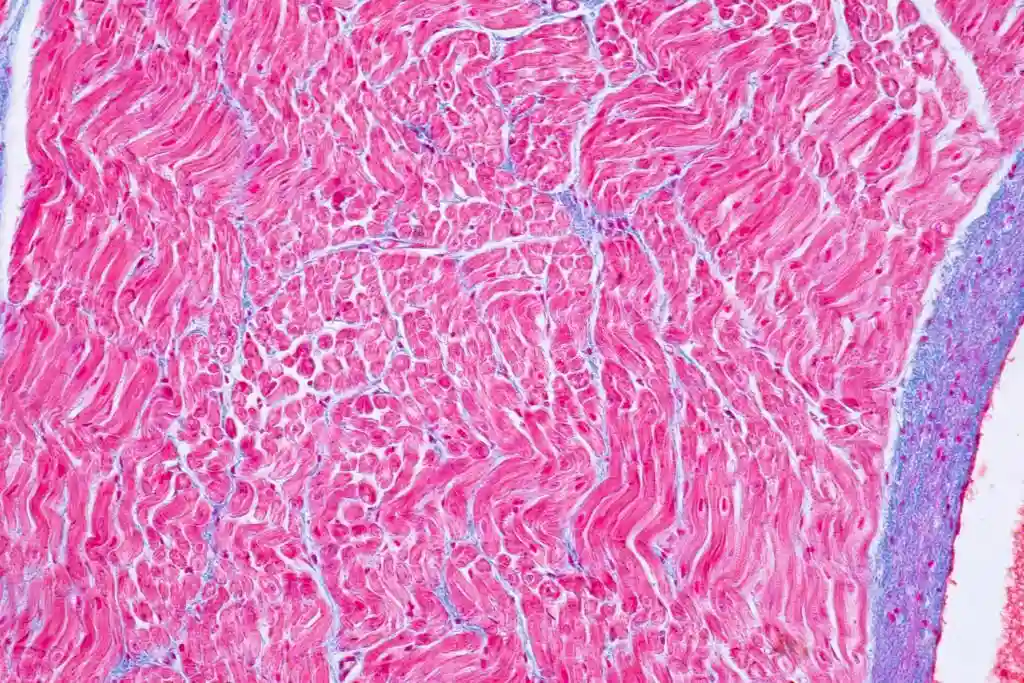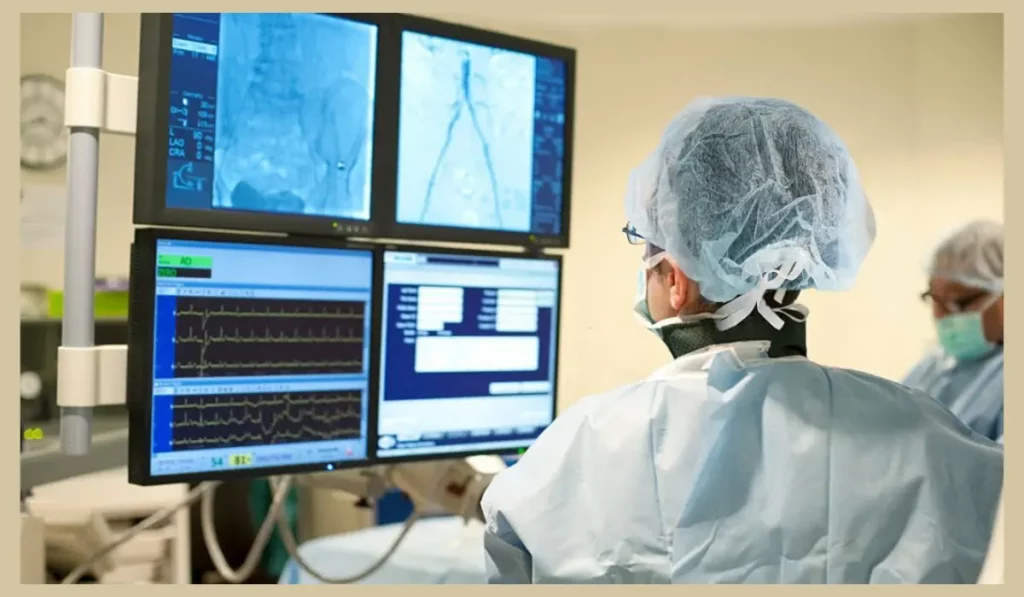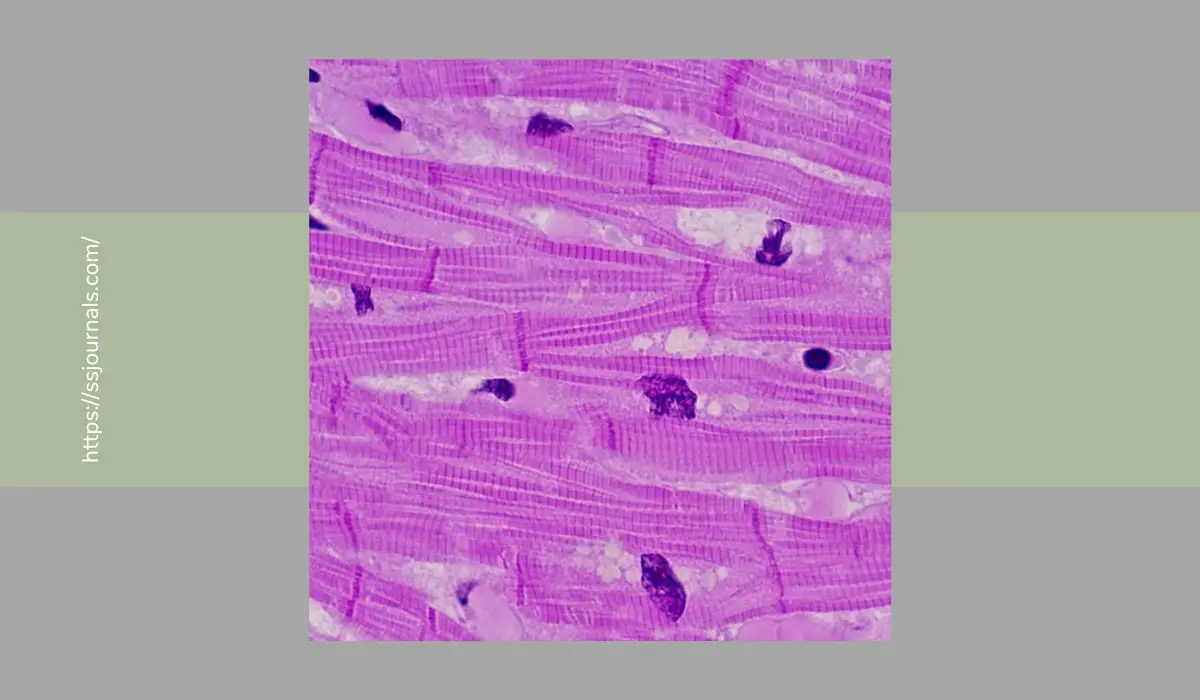In the intricate orchestra of our bodies, there’s one extraordinary performer that deserves a standing ovation the cardiac muscle tissue. This remarkable tissue is unique to our hearts and is vital for sustaining life by keeping our circulatory system running smoothly. In this article, we will embark on a journey to uncover the awe-inspiring characteristics and functions of cardiac muscle tissue, shedding light on what sets it apart from other muscle types in our body.
Structure Of Cardiac Muscle Tissue

- Striated Appearance: Imagine looking at cardiac muscle tissue under a microscope, and you’ll notice something captivating. It appears striated, marked by alternating dark and light bands. This striped appearance is a result of the way contractile proteins, mainly actin and myosin, are organized within the muscle cells. These stripes play a critical role in orchestrating the rhythmic contractions of the heart, essential for its relentless pumping action.
- Branching Cells: Unlike the neatly aligned fibers of skeletal muscles, cardiac muscle cells are like an intertwined family tree. They branch out and connect, forming a vast network. These connections are aptly named “intercalated discs” and come equipped with gap junctions, which act as communication channels for electrical impulses. It’s these channels that allow the heart’s rhythm to synchronize.
- Cellular Organization: There is a busy center inside cardiac muscle cells. Although these cells are tinier versions of their skeletal muscles’ cousins, they contain hundreds of thousands of miniature power sources called mitochondria. Such mitochondria act as mini-stations that are always supplying the never-ending pumping of the heart with energy. Besides, cardiac muscles are highly saturated with myoglobin, which is a blood-based reserve for oxygen demand.
Function Of Cardiac Muscle Tissue
- Involuntary Contractions: One of the most astounding aspects of cardiac muscle tissue is that it contracts involuntarily. That means it operates without any conscious control. The heart doesn’t wait for our permission to beat it simply does its job. Electrical impulses originating from the sinoatrial (SA) node initiate these contractions, and they swiftly travel through the cardiac muscle cells, resulting in a beautifully coordinated heartbeat that propels blood through our circulatory system.
- Sustained Contractions: Cardiac muscle tissue possesses a unique ability to contract rhythmically and do so tirelessly throughout our lives. While skeletal muscles can tire out relatively quickly, the heart doesn’t get the luxury of rest. It sustains its performance thanks to a continuous supply of oxygen and nutrients delivered by the coronary arteries. This incredible endurance is what keeps our hearts pumping without fail.
- Responsiveness to the Autonomic Nervous System: Just like a skilled conductor guides an orchestra, the autonomic nervous system oversees our heart’s rhythm and strength. Cardiac muscle tissue listens closely to signals from this system, adapting the heart’s output to meet our body’s ever-changing needs. The sympathetic nervous system steps in to increase heart rate and contractility during stressful or active moments, while the parasympathetic nervous system gently slows things down when we’re at rest.
Clinical Relevance

- Cardiac Disorders: Cardiac muscle tissue is important when it comes to heart diseases and disorders. Cardiac hypertrophy can be classified as physiological or pathological. Specifically, conditions such as cardiomyopathy, heart failure, and arrhythmias directly affect the function of cardiac muscle tissue. For proper diagnosis and management, the doctors should thoroughly understand how the myocardium in the heart works.
- Cardiac Medications: A plethora of medications are engineered to influence the behavior of cardiac muscle tissue. For example, beta-blockers are used to gently slow down the heart rate, while calcium channel blockers can modulate the strength of contractions. Understanding how these drugs interact with cardiac muscle is indispensable for managing heart-related conditions.
- Cardiac Surgery: Cardiac surgeons often need to step onto the stage to perform intricate operations on the heart. Whether it’s correcting structural abnormalities or addressing blockages in the coronary arteries, comprehending the nuances of cardiac muscle tissue is critical for the success of these procedures. Any misstep could have dire consequences, underscoring the importance of a surgeon’s expertise.
Also, Read: Is Heart Attack Heriditary?
Conclusion
The unsung hero among the tissues is the cardiac muscle tissue, which keeps bodies in harmony and ensures sufficient nutrients and oxygen reach every part of our bodies. Though involuntary, its structural nature makes it a key player in the symphony of life. Healthcare providers must understand the complexity of cardiac muscles, while those who care about their hearts should try and comprehend as well. This book gives penetrating details about the mysterious function of the heart and reminds us how wonderfully designed the human body is during our course into the world of adult life.
FAQ
Cardiac muscle towel is a unique type of muscle towel set up simply in the heart. It forms the muscular structure of the heart and is responsible for the metrical condensation that pumps blood throughout the circulatory system.
Cardiac muscle towel differs in several ways. It’s striated, meaning it has interspersed dark and light bands under a microscope, and it features raying cells connected through fitted discs. Unlike cadaverous muscle, cardiac muscle contracts inevitably and is erected for sustained nonstop condensation.
The primary function of the cardiac muscle towel is to pump blood throughout the body. It maintains the rotation of oxygen and nutrients throughout all body parts and organs, ensuring our survival.
A4 The compression of the cardiac muscle towel is initiated by electrical impulses generated by the sinoatrial( SA) knot. These impulses travel through the connected cardiac muscle cells, performing coordinated condensation that produces the twinkle.
Cardiac muscle towel has a high viscosity of mitochondria, which gives a nonstop force of energy, it’s rich in myoglobin, a protein that binds oxygen. These characteristics enable it to contract rhythmically without tiring.

